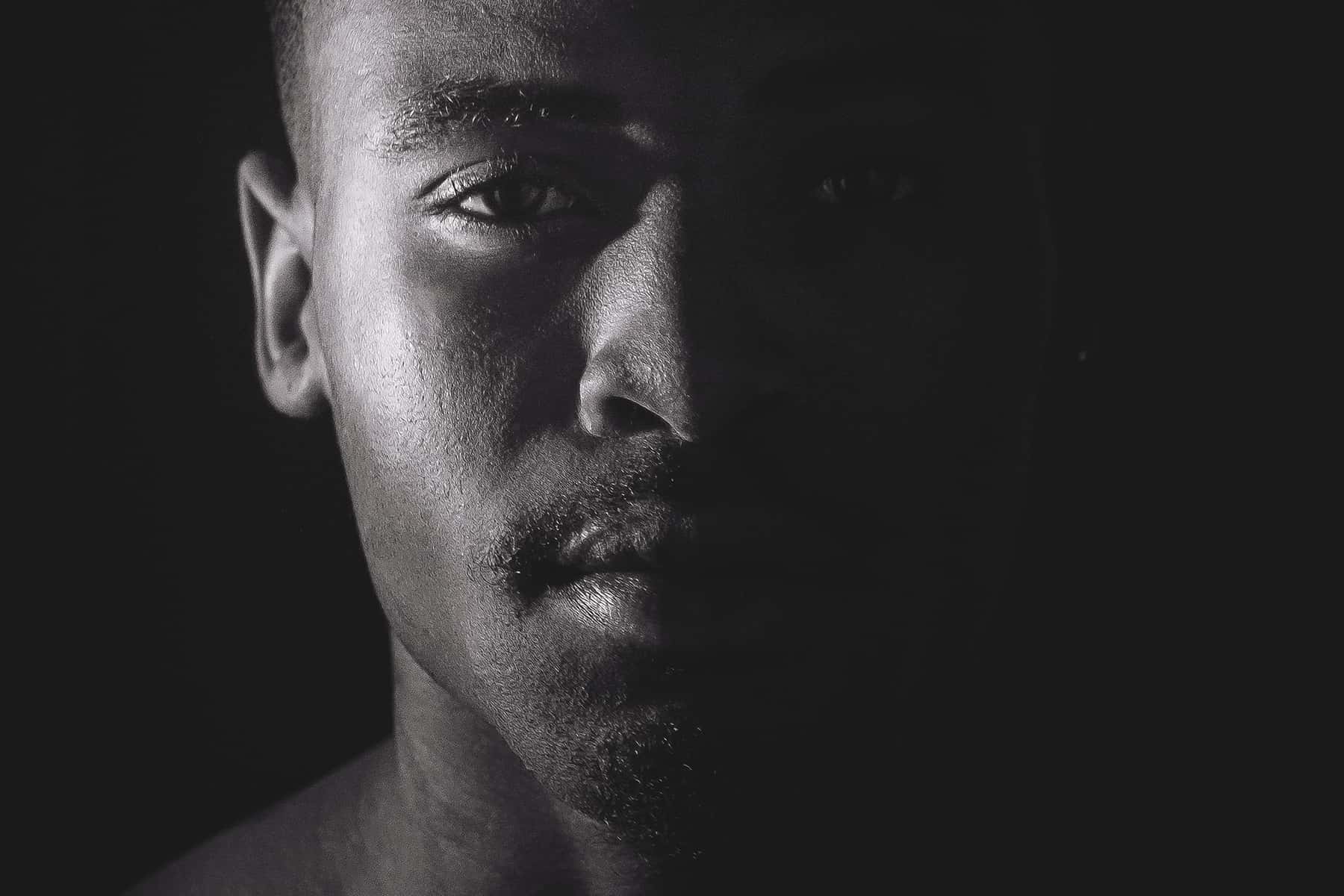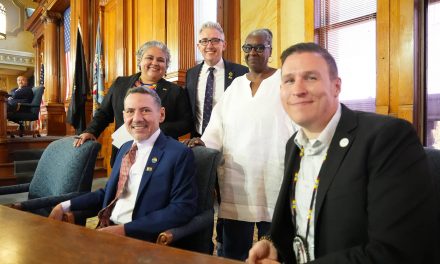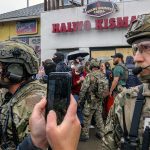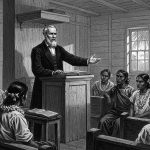
This article is an extension of a post I made on Facebook two years ago. It amazes me that much of what I said then, I am repeating now. Each time there is discussion of police violence against unarmed blacks the same tired narrative plays out, attempting to deflect attention from the issue at hand. Stop comparing apples to oranges.
I have finally had enough. I have been listening to the conversations about the Black Lives Matter movement not being concerned about so-called “black-on-black crime.” Let’s begin by looking at why the movement started. Do you all remember Trayvon Martin being murdered by so-called neighborhood watch officer George Zimmerman? The news of this murder did not become national news as a result of the mainstream media. Angry black people on Twitter made it an issue. Eventually the mainstream media covered the story.
This murder sparked the Black Lives Matter movement. It was a cold-blooded killing of a 17 year-old child by a so-called neighborhood watchman. Martin would have not been suspicious had he not been black. The acquittal of George Zimmerman led Alicia Garza to pen a love letter to black America. On July 13, 2013 she posted this on Facebook: “I continue to be surprised at how little Black lives matter… black people. I love you. I love us. Our lives matter.”
Her friend Patrice Cullors followed up with this post: “black bodies will no longer be sacrificed for the rest of the world’s enlightenment. i am done. i am so done. trayvon, you are loved infinitely. #blacklivesmatter”
A Movement was born out of this exchange of frustration of another unarmed black person being murdered and the criminal justice system failing to find the murderer guilty.
Martin’s murder was followed by the killings of Michael Brown and Eric Garner by police officers in 2014. People argue that instead of blaming the police for being the enemies of black people we should take a look at all of the blacks killing each other around the country. The last time I checked, the Black Lives Matter movement has not referred to the police as the enemy. The police have killed dozens of unarmed black men, women and children over the past several years.
This does not make the police the enemy. However, it makes police suspect in the eyes of many blacks who could at any given moment become the next victim of “justifiable homicide.” The police are paid to protect citizens. So far this year they are on pace to kill over 1,000 people in the United States. They have a dangerous job. Their lives are in jeopardy each day. That threat comes with the job. Each person who takes the oath of office accepts that responsibility. The job does not require or demand that they kill unarmed civilians.
Far too many times police officers have killed civilians and caused their city or town to be sued. The city of Chicago’s government decided to pay the family of Laquan McDonald $5 million before the family even sued. This is after months of the police and elected officials covering up the murder of McDonald and refusing to release video of his murder until ordered to do so by a judge.
Justifiably people have made an issue of police officers killing unarmed black men, women and children and facing no charges or being acquitted. Those who do not feel angry with this apparently feel it is okay. The police are here to protect the public, not to shoot and kill people. If the family members of those yelling “we support the badge” and “blue lives matter” were constantly the victims of police violence they would undoubtedly feel differently. When police violence does not hit close enough to home, people become distant, uncaring and feel no empathy for the black community.
Thousands of people are killed each year in this country. When the victim and perpetrator are black people call this “black-on-black crime.” The last full year of data that is available from the FBI Uniform Crime Reports and their National Incident-Based Reporting System is 2018. According to the FBI, 15,498 people were murdered in the US in 2018, down from 16,499 in 2017. Racial data is available on only 14,123 (91.1%) of those murdered in 2018.
Of the 14,123 victims, 9,066 cases are listed as Not Hispanic or Latino; 2,173 are listed as Latino or Hispanic; 6,088 are listed as White; 7,407 as Black; 395 as other race; and 1,840 are listed as unknown race. This is problematic because it is impossible to discern how many of the victims listed as “white” are actually Hispanic/Latino. Hispanic/Latino is an ethnic group not a racial group according to the government’s definition.
So in a large number of murders the victim and accused murderer’s race/ethnicity is not properly accounted for. This is because most police agencies do not break down and record this data in a way that would help us see the true racial makeup of victims and those accused of murders. So when you hear law enforcement and others pontificating about murders based on race keep this in mind.
The same problems cloud our understanding of those accused of murder. Another issue is that in many cases when a murder happens, multiple people are arrested and accused even if just one is responsible for taking the life of the person. For many years in Wisconsin the number of people arrested for murder far exceeded the number of murders in the state. So when you hear information about someone serving time for murder they may or may not have actually killed someone.
If they were present during the commission of the murder they will often times be charged as a murderer instead of as a party to the murder. Other times when your actions lead to a person being killed you can be charged as a murderer. For instance, if you commit a crime such as driving recklessly and the police chase you, crash into another vehicle and kill the people in that car you can be charged with vehicular homicide, even though the police actually ran into the car and killed the people. So the data will always be skewed. The other problem with data from the FBI, is that many police agencies do not report any data to them even though a federal law requires it.
The FBI reports that: “The FBI’s Uniform Crime Reporting (UCR) Program is a nationwide, cooperative statistical effort of nearly 18,000 city, university and college, county, state, tribal, and federal law enforcement agencies voluntarily reporting data on crimes brought to their attention.” The operative word is voluntarily.
When it comes to national data on murders, the National Criminal Justice Reference Service reported many years ago: “The FBI Uniform Crime Report’s (UCR’s) ‘murder and non-negligent manslaughter’ data are so seriously flawed that the only figure they can provide criminologists is the number of deaths investigated by police as potentially criminal homicides, and the weapons use data reported by the UCR and the National Crime Survey (victimization data) are unreliable as well.” Another problem with the FBI data on crimes in general is: “If the same person commits multiple crimes simultaneously, then the most significant crime is the only one that receives a statistical notation in the UCR.”
A Capital News Services report in January found major differences in crime statistics reported by different agencies in Maryland. “In one county, for example, the FBI reported 13 people murdered; the state police listed 23 and the county, 26…The FBI also reported 23 fewer murders statewide in 2017 than the Maryland State Police did. In the 2016 reports, the FBI listed two more murders than the state police did.” This does not provide a great deal of confidence in the data from the FBI. According to Adam Wandt, a public policy professor at John Jay College: “Some states report better than others.” Despite these flaws, the data is all we have to work with nationally.
Using the 2018 data, 16,335 murder offenders are listed. Of those, 4,821 have their race listed as unknown (29.5%); 4,884 are listed as White (29.9%); 6,318 are listed as Black (38.7%); 1,576 are listed as Hispanic or Latino (9.6%); 312 are listed as other race (1.9%). However 8,375 of the 16,335 have their ethnicity listed as unknown. That is 51.2% of those listed. 14,396 of the 16,335 are either listed as Not Hispanic or are of unknown ethnicity (88.1%). Once again ethnicity data is very unreliable and skews the data. The police choose how to identify a person’s race and ethnicity. It is not that hard to ask a person to self identify. Of the 2018 victims 52.4% were black, 43.1% where white, and 2.8% are listed as other race while 15.4% are listed as Hispanic or Latino.
White people kill thousands of white people every year and no one ever talks about “white-on-white crime.” Googling “white-on-white crime” returns 2,200,000 results in .034 seconds; Googling black-on-black crime on the other hand returns 1,110,000,000 results in 0.45 seconds.That is 50 times more results for the term black-on-black crime. It has become a part of the English language in a way that white-on-white crime has not.
In 2018 using FBI data 10,310,960 persons were arrested. 1,654,282 were arrested for drug abuse violations; 1,001,329 for driving under the influence; 887,622 for larceny-theft; 395,800 for aggravated assault; 329,152 for disorderly conduct; 328,772 for drunkenness; and 11,970 for murder and non-negligent manslaughter.
When people use the term black-on-black crime they will typically follow that up with the number of murders over a period of time. The term is a euphemism for black murder of other blacks. Since murderers are only 0.12 percent of all arrestees in 2018, apparently those who use this term as a weapon are unconcerned about other crimes and victims.
Using the “black-on-black” crime argument you would think black people are the only ones killing each other. The circumstances related to the murders that are occurring are rarely taken into consideration. Of the murders and non-negligent manslaughters where circumstances are known, 24% of people were killed as the result of an argument; only 3.9% are during the course of a robbery; and just 4.3 % are gang related.
According to 2018 data, when race of offenders and victims are known, (which is in just 45.7 percent of murders), 81 percent of whites are listed as killed by other whites, 15.5 percent of whites are listed as killed by blacks, 88.9 percent of blacks are listed as killed by other blacks and 8 percent of blacks are listed as killed by whites.
Most people are unaware of these statistics. As a result, they yell and scream that black people need to stop killing other black people with out ever once saying white people need to stop killing other white people. I hear many consistently say that unless we stop killing each other, we should not complain about the police killing black people. People of all racial groups tend to kill people who look like them.
The police on the other hand, kill blacks disproportionately. Data from 2013-2019 shows that Black Americans are 2.5 times as likely as White Americans to be shot and killed by police officers. In Wisconsin, Blacks are 6.32 % of residents but accounted for 24% of those killed by police according to Mapping Police Violence.
Between 2013 and 2019, police in the United States killed 7,666 people. Black people have been 28% of those killed by police since 2013 despite being only 13% of the population. Of those 7,666 killed by police over 1,000 were unarmed and 17.3% of the black people who died as a result of police interactions were unarmed, a rate higher than for Whites (13.3%), and Hispanics (15.5%).
The problem is getting worse. People of color were more likely to be the killed by police in 2019 than they were in 2014. In 2019, 54% of those killed by police and whose race was identified were people of color — including Asian, Black, Hispanic, Native American and Pacific Islander individuals — compared to 50% in 2014. Through the end of June, 2020, 598 people have been killed by police; at this time in 2019 it was 534, (590) in 2018, (551) in 2017, (545) in 2016 and (516) in 2015.
A quick comparison of a couple of cities shows that it is not an issue with every department. Buffalo, NY (population 258,959) 50% non-white and Orlando, Fl (population 255,483) 42% non-white, had huge differences in police killings. From 2013-2016 Buffalo police did not kill a single person while Orlando police killed 13 people. The Milwaukee Police Department killed 17 from 2013-2019, all but three were black.
Despite all of the attention on this issue since 2014, only about 1% of police officers involved with these deaths have been charged with a crime and even less are convicted, according to Mapping Police Violence. It is not just a problem of unarmed blacks being killed either. From 2013- 2019, 336 unarmed blacks, 452 unarmed whites, 201 unarmed Hispanics and 12 unarmed Asians were killed by police.
Obviously we should be concerned about murders within the black community. There is very little we can do about people getting angry and killing someone in an argument or in a domestic violence homicide. Protests against murders simply do not make a lot of sense because the people who murder rarely contemplated the killing ahead of time like we see in so many fake tv cop dramas and bad Hollywood movies.
As people argue that the numbers of murders in Milwaukee is out of control in 2020, we must be cognizant of circumstances, not just numbers. As of July 4th there have been 72 homicides in Milwaukee versus just 44 at this time last year. However we quickly forget that there have been multiple mass killings in the city this year.
26-year old Amarah Banks and her daughters 4-year-old Camaria Banks and 5-year-old Zaniya Ivery were murdered in an act of domestic violence on February 8, 2020. Aubrianna Lancaster and her girlfriend Meshala Pabai were both murdered by Pabai’s brother on February 22. Jesus Valle Jr, Gennady Levshetz, Trevor Wetselaar, Dana Walk and Dale Hudson were murdered in the mass killing at Molson Coors on February 26. On April 12, Tiera Thomas, Demetrius Thomas, Marcus Stokes, Teresa Thomas and Lakeitha Stokes were all murdered in another act of domestic violence. There was just one multiple victim murder in Milwaukee in 2019.
The Milwaukee Homicide Review Commission was established in January of 2005 by the City of Milwaukee. From 2009 until 2016 The City of Milwaukee Homicide Review Commission provided detailed reports on murders in the city on their website. It has gone dark despite being prominently displayed on the City’s website and their last report was a mid-year 2016 report.
We have no reliable, detailed information on Milwaukee murders coming from the Police Department or city leaders. The Milwaukee Journal Sentinel Homicide Database is the one reliable dataset on murders in the city. The Milwaukee Police Department’s data portal provides little useful information to understand the circumstances related to murders in the city.
Murders tend to be random and unlike in the movies and on television cop shows, it is exceptionally rare for the police to show up at the last moment to prevent a murder from taking place. Going back to 2015 in Milwaukee when murders spiked from 88 the previous year to 145, the numbers have dropped significantly in each full year (141 in 2016, 118 in 2017, 100 in 2018, 98 in 2019). 2020 is an anomaly for a variety of reasons.
There are certainly things that can be done about police killing people. Retraining and requiring police to use non-lethal force on unarmed people will certainly go a long way towards lowering the number of people being killed by the police. Holding officers accountable by charging them with murder and getting juries to convict them, which rarely happens, will go a long way towards changing the perception of unarmed blacks killed by police.
Let’s stop losing focus and changing the subject when it comes to police and or vigilante violence against blacks. That is what the Black Lives Matter movement originally brought focus to. A person randomly killing someone is a totally and completely separate issue. For those so concerned about these murders, you need to offer some solutions to stop them.
I hear a lot of people on social media talking about it, but how many are supporting the Office of Violence Prevention’s Blueprint for Peace that Reggie Moore and his team created? Stop blaming the Black Lives Matter movement for not addressing the issue of murder within our community because it is also central to the idea of black people valuing the lives of other black people too.














